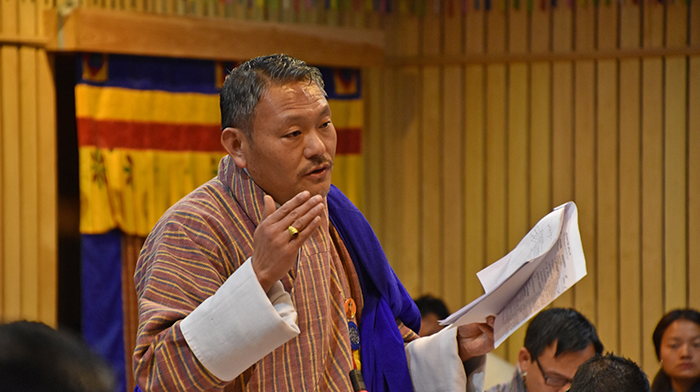56 percent of irregularities from RAA report 2018 resolved
MB Subba
If excess payments made to contractors are a recurrent lapse across government agencies, laxity and non-diligence on part of dealing officials were the reasons.
Chairman of the Public Accounts Committee (PAC), Phuntsho Rapten, pointed out this yesterday while presenting the committee’s report to the joint sitting of parliament.
Irregularities amounting to Nu 1,047 million (M) from the fiscal year 2017-18 remained unresolved as of November last year. Total unresolved irregularities as of June last year was Nu 2,376M.
The PAC reported that Nu 1,328M (56 percent) was settled as of November 2019.
Phuntsho Rapten reported irregularities occurred due to recurrent lapses across public agencies. The committee cited failure on part of implementing agencies to comply with rules as one of the main reasons for the lapses.
The PAC observed that payment by public agencies for works that are not executed as one of the major issues. Public agencies resorted to such practices towards the end of the financial year to avoid budget lapses, according to the committee.
The committee also noted that there were several instances of lapses in public works ranging from blacktopping of roads to construction of water tanks, footpaths, offices, residences and irrigation water schemes.
“The lapses occurred largely from deviating from specifications and the responsible officials failing to monitor and ensure quality of work at site. There were also instances where sub-standard works were accepted without rectifying defects,” Phuntsho Rapten reported.
The committee stated that most of the lapses could have been prevented.
The committee found that agencies in many instances did not take audit findings seriously and failed to put in place effective measures to prevent recurring of the lapses.
PAC’s recommendations
To prevent recurrence of such lapses, the PAC recommended the finance ministry, the coordinating agency for all internal audits units, to support capacity building of internal audit units in public agencies.
The committee also recommended the central coordinating agency (CCA) for internal audit service under the finance ministry and the Royal Audit Authority (RAA) to collaborate in sharing resources to complement and supplement each other’s works and reduce redundancy.
“For instance, CCA and RAA can mutually work together to add value to each other’s annual audit reports and ensure better compliance to the established rules and processes by the agencies. Likewise, the two agencies can also support each other in strengthening institutional capacity,” Phuntsho Rapten said.
The PAC reported that it was generally mid-level officials who were fixed with direct and supervisory accountabilities on audit findings, rarely the head of the agency. This, the PAC reported, was due to lack of a clear framework to fix accountability.
But the committee informed that RAA had recently developed rules and regulations for fixing accountability on audit findings.
“To promote understanding and uniform application of the rules and regulations, the RAA must carry out awareness initiatives on its new rules from 2020,” the PAC recommended.
The joint sitting adopted the recommendations.
On lack of efficiency of internal audit units, National Council member from Chhukha, Sangay Dorji, said internal auditors had to carry out other responsibilities in addition to their main function.
Panbang MP Dorji Wangdi said that time had come for the government to place internal auditors in all the dzongkhags. According to him, internal auditors carried out auditing work not only at the dzongkhag level but also in gewogs.
Prime Minister, however, said that most dzongkhags already have internal auditors.
The PAC also observed that insufficient staff and capabilities, work overload, time pressure, change in persons and improper handing-taking over also contributed to the lapses.


